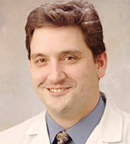
The objective with the Oncology Care Model is to streamline our health-care services, but to do this, clinicians need to act on the data we provide them. It boils down to understanding the data and implementing strategies that improve the lives of our patients.— Blase N. Polite, MD, MPP
Tweet this quote
At this year’s ASCO Quality Care Symposium, Blase N. Polite, MD, MPP, Associate Professor of Medicine at The University of Chicago Medical Center, examined his practice’s experience with the Oncology Care Model, a Centers for Medicare & Medicaid Services test payment and delivery program designed to improve the effectiveness and efficiency of specialty care, such as oncology.1
Dr. Polite’s stated objective was to walk the audience through the planning and implementation of strategies needed to adapt to the Oncology Care Model. “I also want to talk about the major implementation barriers we’ve faced with the Oncology Care Model. As those of you who’ve had leadership roles in academic medicine understand, it’s the herding of busy, overworked, and electronic health record–burnt-out cats, and sometimes I’m one of those cats,” admitted Dr. Polite.
How It Works
Under the Oncology Care Model, an institution such as The University of Chicago Medical Center would get medical enhanced oncology services payments of about $1.5 to $2 million per year. “Before spending that money, it’s vital to know where you can have maximal impact on providing efficient patient care,” said Dr. Polite.
To that end, he offered a set of guiding principles for his faculty, based largely on workflow changes, which should be shared and designed to foster better care of patients in a consistent manner. Dr. Polite emphasized that nothing is written in stone, and refinements are needed over time, as changes are vetted in busy oncology clinics.
He then shifted to risk adjustment, stressing that one can “live or die in any of these payment models” by how risk adjustment is managed. Although a certain portion of the risk adjustment is out of the provider’s hands, Dr. Polite stressed the significance of proper coding in certain areas such as comorbidities. For instance, a 65-year-old man with lymphoma who has part D and no Medicaid is expected to cost Medicare $23,657 over a 6-month episode; add three comorbidities, and the expected cost to the University increases by about $10,000. It is against these expected costs that shared savings will be determined.
Quality performance is another area that requires special attention, as performance on quality metrics can impact the ability to keep any shared savings realized. Designing systems such that we can know in real time how we are performing on these metrics so corrections can be made prior to the end of the reporting period is critical.
Cost of Care
Dr. Polite noted that about one-third of an institution’s cost in the Oncology Care Model is related to chemotherapy; inpatient care consumes another one-third of cost. Controlling chemotherapy costs was uncertain and largely out of the control of an oncologist, so he and his team focused on inpatient costs. After analyzing the Medicare data on average expenditures per patient per month, adjusted for patient risk, Dr. Polite acknowledged that his institution’s inpatient-spending rate is higher than it should be based on its risk profile.
“We’ve drilled down and examined problem areas, such as our readmissions and ancillary services, and are finding ways to reduce those unnecessary costs. Moreover, we see that most of our emergency room (ER) visits are for pain control, many of which are after hours.”
To reduce those costly visits, we’ve investigated making investments in after-hours urgent care and other methods to prevent the need for an after-hours ER visit,” revealed Dr. Polite. However, in certain areas such as hospice, chemotherapy, and intensive care unit use within 30 days of death, The University of Chicago Medicine Center was either better or in the range of national benchmarks. We continue to look for ways to improve on our areas of strength as well.
To develop a strategy for improvement, Dr. Polite looked at one of his institution’s vulnerabilities: time from discharge to outpatient appointment. The University of Chicago Medical Center’s median was 19 days, and the national goal was up to 7 days. “We are spending a lot of time on this issue, figuring that once we get closer to our goal of 7 days or less, it would also help on the inpatient readmissions metric,” explained Dr. Polite.
High-Risk Patients
Identifying high-risk patients also became a priority. Dr. Polite explained that they implemented a supportive care screener, which identifies issues such as physical, emotional, psychological, financial, and home support. After high-risk patients are identified, some of the funds from the Oncology Care Model are going to be used for enhanced services to address the needs of these patients. It is a comprehensive assessment, review, referral, and care coordination process. Dr. Polite readily admitted that the bugs were still being worked out of the screening process.
Currently, 18% of patients had a positive screen, but only 27% of those screens had an associated action documented. “The objective with the Oncology Care Model is to streamline our health-care services, but to do this, clinicians need to act on the data we provide them. It boils down to understanding the data and implementing strategies that improve the lives of our patients. And at the end of the day, money alone is not going to solve problems; it has to be a cultural change,” said Dr. Polite. ■
Disclosure: Dr. Polite reported no potential conflicts of interest.
Reference

